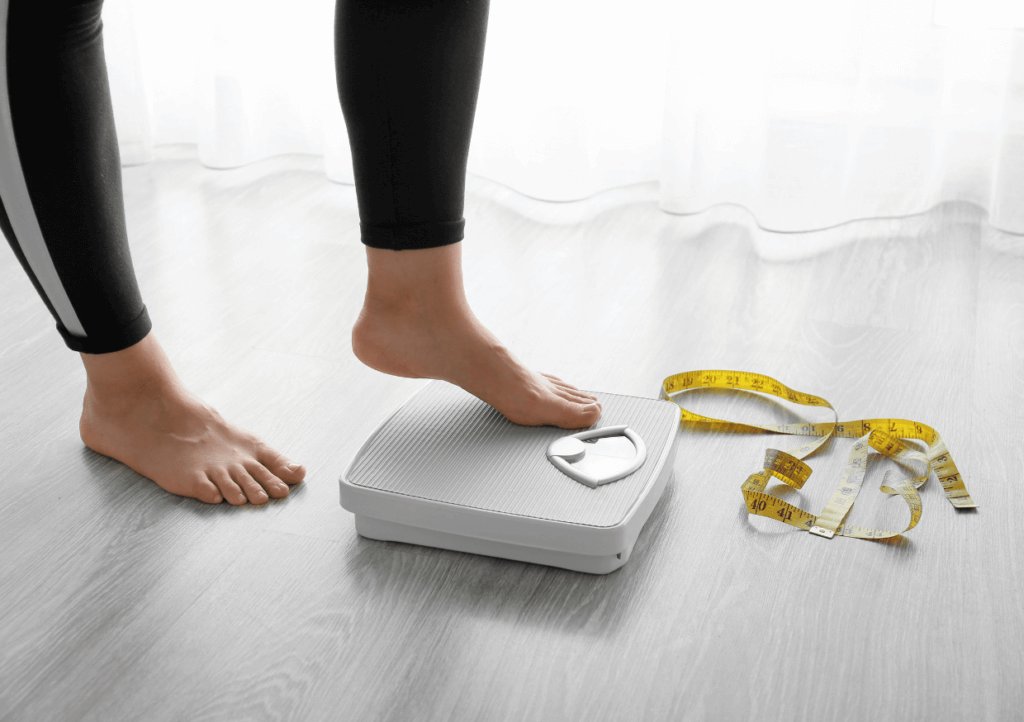Table of Contents
When it comes to shedding those extra pounds and sculpting a healthier body, two popular choices stand out: cycling and running. These timeless cardio exercises have garnered a dedicated following for their effectiveness in promoting weight loss.
In this article, we will delve into the benefits of cycling and running, comparing their calorie-burning potential, impact on joints, and long-term viability.
By the end, you’ll have a clearer understanding of whether cycling or running aligns better with your weight loss goals.
Understanding Weight Loss and Cardiovascular Exercise

Before we delve into the cycling vs. running debate, let’s establish a fundamental principle: weight loss hinges on burning more calories than you consume. Cardiovascular exercise plays a crucial role in this equation by ramping up your calorie expenditure.
Both cycling and running are great choices for effective cardio workouts, which contribute significantly to your weight loss journey.
Cardiovascular exercise, often referred to as cardio, involves activities that elevate your heart rate and breathing. This includes a wide range of exercises, with cycling and running being two of the most popular options.
The basic premise of weight loss is simple: you need to burn more calories than you consume. This is where cardio comes into play. By engaging in cardio exercises regularly, you can increase your calorie expenditure, creating a calorie deficit that leads to weight loss.
When you engage in cardio exercises like cycling and running, your body demands more energy to sustain the increased effort. As a result, your metabolism ramps up, causing your body to tap into its energy reserves, including stored fat, to fuel your activity.
In essence, cardiovascular exercise acts as a catalyst for weight loss by increasing your energy expenditure and creating a calorie deficit. This deficit prompts your body to rely on stored energy, primarily fat, resulting in a gradual reduction in weight over time.
Cycling and running are not just about burning calories during the workout—they contribute to reshaping your body composition and improving your overall health when incorporated into a comprehensive weight loss strategy.
Cycling for Weight Loss

Benefits of Cycling
Cycling offers an abundance of benefits that make it an appealing option for those seeking to shed pounds. One of its standout features is its low impact on joints.
Unlike running, where the repetitive impact can stress your joints and lead to injuries, cycling provides a gentler yet effective workout. Engaging large muscle groups, such as the quadriceps and hamstrings, cycling efficiently burns calories while being gentle on your joints.
Moreover, cycling allows for extended sessions, which enhance endurance and fat metabolism. For individuals carrying extra body weight, cycling can be particularly advantageous as it provides a supportive environment to begin a fitness journey.
Gaining momentum on a bike and cycling along at a comfortable pace can be more manageable, easing newcomers into the world of cardio exercise.
The benefits of cycling extend beyond weight loss. One of the most significant advantages is its minimal impact on your joints.
When you cycle, your body weight is supported by the bike and the seat, reducing the strain on your ankles, knees, and hips. This makes cycling an excellent option for individuals with joint issues or those who are recovering from injuries.
Calories Burned While Cycling
The calories burned during a cycling session vary based on factors like intensity, duration, and terrain. On average, a leisurely bike ride at around 16-19 km/h (10-12 mph) can help you burn approximately 290-345 calories per hour.
Stepping up the pace to 23-26 km/h (14-16 mph) increases the calorie burn to around 590-705 calories per hour. The hilly terrain can also elevate your calorie expenditure further.
Your calorie burn while cycling depends on various factors. The intensity at which you cycle, the duration of your ride, the type of terrain you’re on—all these elements contribute to the total calories burned.
For example, a leisurely ride on a flat surface will burn fewer calories than a high-intensity ride on a hilly terrain.
It’s important to note that as you work up a sweat and burn calories from cycling, you might also work up an appetite. Therefore, it’s crucial to be cautious of the food you eat on the bike and after a ride, not to overeat. While you’ve burned calories, consuming excessive amounts could counteract the calorie deficit you’ve worked hard to achieve.
Additionally, during longer rides, consider replenishing electrolytes to maintain hydration and support optimal muscle function.
Tips for Effective Weight Loss through Cycling
To optimize weight loss through cycling, consider incorporating interval training. This involves alternating between periods of intense pedaling and recovery.
The high-intensity intervals spike your heart rate, maximizing calorie burn. As with any fitness endeavor, proper nutrition and hydration are crucial.
Fueling your body adequately supports performance and contributes to weight loss. Consistency is key, so aim for regular cycling sessions to see sustainable results.
Interval training is an effective technique to boost your cycling workouts. By alternating between high-intensity bursts of pedaling and periods of moderate cycling, you can elevate your heart rate and increase your calorie burn.
For instance, you could cycle at a moderate pace for 3 minutes, then increase your speed and effort for 1 minute, before returning to the moderate pace. This cycle can be repeated throughout your workout.
Running for Weight Loss

Benefits of Running
Running packs a powerful punch when it comes to torching calories and shedding fat. Its high-intensity impact stimulates bone density and muscle strength.
Despite its higher joint impact compared to cycling, running’s efficiency in burning calories within a shorter timeframe is noteworthy. Furthermore, the beauty of running lies in its versatility—no special equipment needed, making it accessible to all.
Running offers a range of benefits beyond weight loss. One of the key advantages is its efficiency in burning calories due to its high-intensity nature.
When you run, you engage multiple muscle groups, elevating your heart rate and promoting calorie burn. This efficiency makes running an excellent choice for individuals with a busy schedule who want to maximize their calorie expenditure in a shorter amount of time.
Calories Burned While Running
Your calorie burn while running is influenced by factors such as your running pace, terrain, and incline. On average, running at a pace of 10 minutes per kilometer (16 minutes per mile) can help you burn about 600-700 calories per hour.
As you increase your pace to 8 minutes per kilometer (13 minutes per mile), the calorie burn escalates to around 800-950 calories per hour.
Running’s calorie burn is influenced by several factors. One of the most significant is your running pace. The faster you run, the more calories you’ll burn in a given time frame.
Additionally, running on inclines or uneven terrain requires more effort, leading to a higher calorie burn.
Tips for Effective Weight Loss through Running
Varying your running workouts can spice up your weight loss efforts. Consider incorporating sprints, which involve short bursts of high-intensity running followed by periods of rest.
Long runs at a comfortable pace also contribute to calorie burn and stamina development. To prevent injuries, maintain proper running form, and invest in suitable footwear.
For longer runs, don’t be afraid to run slower than you think you should, particularly at the start of a run. This approach helps build fitness and keeps you in the fat-burning zone.
Going too hard from the beginning can be counterproductive and increase the risk of exhaustion or burnout.
Gradually increasing your running intensity allows your body to adapt and reduces the risk of overuse injuries.
Sprints are an excellent way to add intensity to your running routine. Find a stretch of open space and sprint as fast as you can for about 20-30 seconds, then walk or jog for a minute to recover.
Repeat this cycle several times during your run. Sprints elevate your heart rate, burn more calories, and improve your cardiovascular fitness.
Comparing Cycling and Running for Weight Loss

Caloric Expenditure
When comparing cycling and running’s average calorie burn, both activities offer effective weight loss benefits. Cycling tends to burn slightly fewer calories than running due to its lower impact.
However, personal factors such as weight and fitness level can influence this. The number of calories burned during cycling and running depends on multiple factors, including the activity’s intensity and your individual characteristics.
Generally, running burns more calories per minute due to its higher impact nature. However, cycling can make up for this by allowing longer workout durations.
For beginners, cycling often offers a smoother entry into cardio exercise, allowing them to gradually increase workout volume and build endurance more easily compared to running.
Impact on Joints and Injury Risk
Cycling’s low impact on joints makes it a preferable choice for individuals prone to joint issues or recovering from injuries. Running’s higher impact can increase the risk of injuries like shin splints, stress fractures, and knee pain. If joint health is a concern, cycling offers a safer alternative.
If you have a history of joint problems or you’re looking for a lower-impact cardio option, cycling is an excellent choice. The circular motion of pedaling puts less stress on your joints compared to the impact of running.
This makes cycling a more comfortable option for those with existing joint concerns. Additionally, for beginners, running often requires longer recovery time between sessions due to its higher impact nature, whereas cycling can be enjoyed on several consecutive days without as much strain on the joints.
Longevity and Consistency
Sustainability is key for any weight loss journey. Both cycling and running can be integrated into a long-term routine, and they offer an added benefit that can significantly enhance consistency: the social aspect.
Both activities can be enjoyed with groups or other people, which can provide a strong support system and encourage you to keep going.
Some individuals find the rhythmic motion of cycling soothing, while others thrive on the intensity and adrenaline of running.
When it comes to longevity and consistency, personal preference and enjoyment are vital factors. If you don’t enjoy your chosen exercise, you’re less likely to stick with it over the long term.
The best exercise routine is one that you look forward to and can maintain consistently. Whether you’re cycling with friends or joining a running club, the social component can make your fitness journey more enjoyable and sustainable.
Choosing the Right Cardio Option for You

Assessing Your Goals
The choice between cycling and running hinges on your weight loss goals. If you’re looking for a joint-friendly option that allows for longer workouts, cycling might be your match.
For those seeking efficient calorie burn in a shorter time and are willing to manage the higher impact, running could be your go-to.
Assessing your goals and priorities is crucial in determining whether cycling or running is the right fit for you. Consider what you enjoy, your current fitness level, any existing injuries or joint issues, and the amount of time you’re willing to commit to your workouts.
Personal Preference and Enjoyment
Remember that enjoyment is a cornerstone of consistency. Both cycling and running offer unique benefits beyond weight loss.
Cycling allows you to explore scenic routes and enjoy social rides, while running can be an immersive experience where you challenge your mental grit.
Your enjoyment plays a significant role in maintaining a consistent exercise routine. If you find joy in the activity you choose, you’re more likely to stick with it over the long term.
Consider what aspects of each activity resonate with you, whether it’s the thrill of speed while cycling or the sense of accomplishment after a challenging run.
Keep in mind that cycling may require longer routes, which might be more challenging if you live in a city or built-up area. On the other hand, running can be a safer option during darker hours, with well-lit paths and sidewalks often more accessible.
If outdoor conditions aren’t favorable, indoor cycling is an excellent alternative, providing a controlled environment for your workouts.
Combining Cycling and Running
If you find it hard to choose between cycling and running, why not combine them? Incorporating both activities into your routine offers variety, prevents burnout, and engages different muscle groups.
You could go for a cycle when you have more time and opt for a run when you have less time, ensuring you make the most of your available moments.
Combining cycling and running can be a fantastic way to keep your routine exciting and effective, allowing you to enjoy the benefits of both activities based on your schedule.
Not only does this approach prevent monotony, but it also provides a full-body workout. Cycling works your lower body muscles, while running engages your legs, core, and upper body for balance and stability.
This balanced combination contributes to overall fitness, helping you achieve your weight loss goals while enjoying a diverse range of cardiovascular activities.

